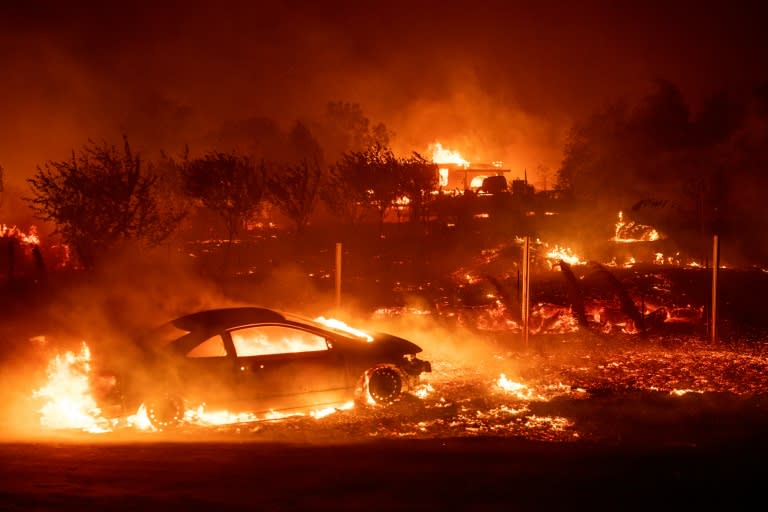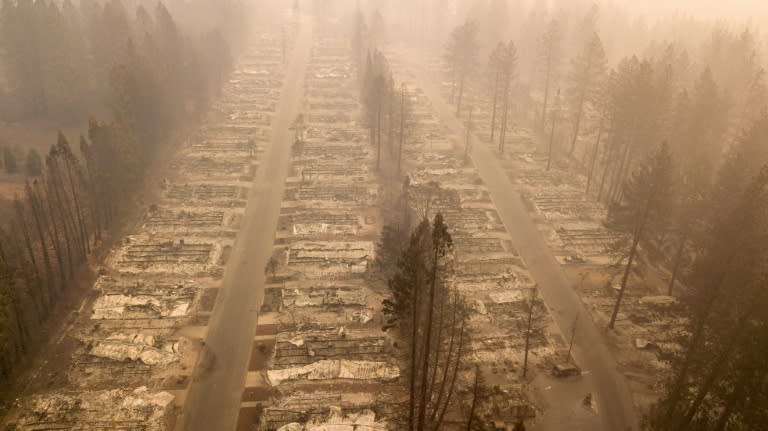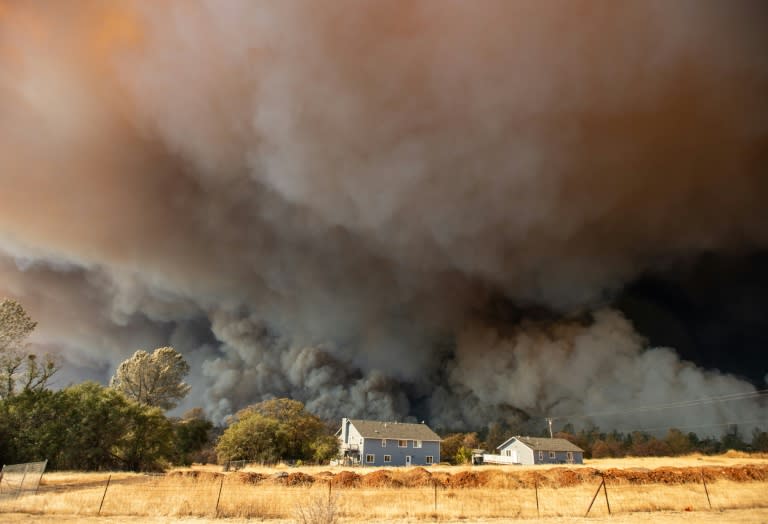Paradise regained? Experts call for European approach to US housing
With the embers still raining from blackened skies choked by California's massive wildfires, the effort turns to rebuilding Paradise -- a town of almost 30,000 that was wiped off the map. But experts warn that with megafires the new normal in a warming global climate, housing in the western United States is going to need a revolutionary rethink along the lines of villages dotting Europe's wooded slopes. "I think people are thinking about if there is a way we can design the new Paradise that can look like more of a European village or a ski town, and not have houses out in the forests," said Bill Stewart, co-director of the Center for Forestry at the University of California, Berkeley. Stewart suggests the approach seen in the Pyrenees mountains straddling France and Spain -- villages surrounded by pastures with the forest further beyond -- may be the model for California's future. "It would be a lot safer if we didn't have people basically living in the fuel," he told AFP. The death toll in and around Paradise -- in the tinder-dry northern foothills of the Sierra Nevada Mountains -- stands at 81, with hundreds still missing and more than 12,600 homes destroyed since the giant Camp Fire broke out on November 8. Climate change, poor management of forests by the US government and sharp increases in housing in the woods have all made such megafires more likely and more deadly, said Stewart. - 'The new abnormal' - European countries such as France, Portugal and Spain lose a higher percentage of their forests to fire each year. But they rarely suffer the destruction and death seen regularly in California and its neighboring states, says Stewart, because "people don't live in the forests." From the wealthy enclaves of southern California to the rural grandeur of Yosemite National Park, this year California has seen an unprecedented four megafires -- defined by emergency services as infernos that burn more than 100,000 acres (40,500 hectares). Among them, the Camp Fire has scorched an area larger than Chicago, while another two infernos that burned more than 96,000 acres were just short of the megafire category. "This is a faster increase than even the most pessimistic researcher had a decade ago. It's even shocking to most grizzled observers," Stewart told AFP. "There are things to do, but even if we did those we might only have four megafires a year instead of eight." California Governor Jerry Brown made the point even more starkly in an address to the media as the Camp Fire was at its peak, warning: "This is not the new normal, this is the new abnormal. "And this new abnormal will continue certainly in the next 10 to 15 to 20 years. Unfortunately, the best science is telling us that dryness, warmth, drought, all those things, they're going to intensify... Things like this will be a part of our future." - Mediterranean climate - Matt Dias, executive officer of the California Board of Forestry and Fire Protection, said the state has allocated about $1 billion over the next five years for fire prevention. Much of the cash will go on education and suppression activities such as clearing grasses and other vegetation. "The patterns we're experiencing seem to indicate these megafires are likely to keep occurring, but there are ways of pushing back," he said. "Suppression plays a key role in the fire prevention program." But many experts are calling for more restrictions on housing being built in forests as means of eliminating danger before the blazes even break out. A recent study found that one third of all US houses now are located in what researchers refer to as the wildland-urban interface, where houses and forest vegetation intermingle. "We folks who live in California need to understand we live in a Mediterranean climate," said Dias. "Fire is a natural part of our forest lands. As we move forward in time, it seems issues associated with climatic challenges will persist, so these issues with large fires will likely continue."




